What Happened to the 7 Ancient Wonders?
Only one is still standing...
The Great Pyramid of Giza is the oldest of the Seven Wonders of the Ancient World. It is also the only one still standing, as all the others have since succumbed to the passage of time.
The Ancient Greek poet Antipater of Sidon was one of the first to document the wonders which constitute the “official” list (although switching the Lighthouse of Alexandria for the impregnable walls of Babylon), describing them in one of his poems:
I have set eyes on the wall of lofty Babylon on which is a road for chariots, and the statue of Zeus by the Alpheus, and the hanging gardens, and the Colossus of the Sun, and the huge labour of the high pyramids, and the vast tomb of Mausolus; but when I saw the house of Artemis that mounted to the clouds, those other marvels lost their brilliancy, and I said, "Lo, apart from Olympus, the Sun never looked on aught so grand.
So, what happened to the six wonders which are no longer with us?
We have remnants of some of them, but the rest are known to us only by ancient written accounts. Today, we explore the lost wonders of the ancient world, and discover what made them worthy of their title…
Reminder: you can support our mission and get tons of members-only content for a few dollars per month:
Full-length articles every Wednesday and Saturday
Members-only podcasts and exclusive interviews
The entire archive of great literature, art, and philosophy breakdowns
Also, don’t forget to join our brand new sister publication: The Ascent.
The Ascent is our new space to go deeper into theology, mysticism, and ancient texts. We study the ideas, history, and revolutionary teachings from 2,000 years of the Christian imagination, and how they can help the modern reader (Christian or not) ascend to the divine…
You’ll get one free article every Tuesday, and longer essays every Friday for paid readers:
1) The Lighthouse of Alexandria
The youngest of the Seven Wonders rose around 280 BC on the island of Pharos, a stone sentinel guarding Alexandria’s busy harbor.
Alexandria was a jewel of the Hellenistic world, founded by Alexander the Great and ruled by his successors. Its lighthouse reflected its founder’s great ambition: at over 400 feet tall, it was second only to the Great Pyramid in height, and served as a navigational beacon for sailors entering one of the ancient world’s busiest ports.
Accounts describe it as composed of three tiers — square, octagonal, and cylindrical — and topped by a statue of Zeus or Poseidon. A polished bronze mirror is said to have reflected sunlight far out to sea during the day, while fires burned through the night to light the way for mariners.
The lighthouse stood for more than 1,400 years, surviving multiple earthquakes before finally collapsing between the 14th and 15th centuries. Amazingly, divers rediscovered its remains in 1994, uncovering massive granite blocks and statues on the seabed of Alexandria’s harbor — and many more blocks were hauled from the water earlier this year.
2) Mausoleum at Halicarnassus
Built in 350 BC, the Mausoleum at Halicarnassus honored Mausolus, a Persian satrap who ruled over Caria in Asia Minor. His wife (and sister) Artemisia commissioned the tomb after his death, sparing no expense to immortalize him.
Greek architects and sculptors — including Scopas, one of the greatest artists of his age — collaborated on a structure that blended Greek, Egyptian, and Lycian influences. The mausoleum soared over 140 feet high, and was crowned by a marble chariot sculpture. Its design was so influential that Mausolus’ name became synonymous with monumental tombs.
The structure stood for centuries, but was gradually brought down by earthquakes during the medieval period. In the 15th century, Crusaders used much of its stone to fortify Bodrum Castle. Today, visitors to Bodrum (modern-day Halicarnassus) can see the tomb’s foundations, while many of its sculptures and reliefs are preserved in the British Museum.
3) Temple of Artemis at Ephesus
The Temple of Artemis at Ephesus was among the largest temples of antiquity — it was twice the size of the Parthenon, and supported by more than a hundred marble columns. Its history stretches back to the Bronze Age, but the grand version celebrated as an Ancient Wonder was built in the 4th century BC.
Dedicated to Artemis, the temple was a center of pilgrimage and a symbol of Ephesian wealth. It was famously burned down in 356 BC by Herostratus, who admitted he had done it simply to gain fame. Rebuilt even larger, it survived for six centuries before being closed by the Christian Emperor Theodosius I in 391 AD, and then finally torn down a decade later.
Only one reconstructed column now stands at the site in modern-day Selçuk, Turkey. Like those of the Mausoleum, some of the temple’s sculptures are now preserved in the British Museum, where they offer a glimpse of its lost grandeur.
4) Colossus of Rhodes
When the island of Rhodes repelled an invading army in 305 BC, its citizens melted down their enemy’s bronze weapons to create a towering tribute to the sun god Helios. The resulting Colossus of Rhodes, completed in 282 BC, stood over 100 feet tall — roughly the same size as the Statue of Liberty without its pedestal.
Though ancient writers once imagined it straddling Rhodes’ harbor, archaeologists now believe the statue stood inland on a fortified platform. Regardless, its construction was a marvel: workers cast and assembled bronze plates over an iron framework, and then stabilized it by filling the statue’s base with an immense quantity of stone.
An earthquake toppled the Colossus just 54 years after its completion, yet the ruins themselves became a tourist attraction, with travelers marveling at its shattered pieces for centuries. Pliny the Elder even claimed it was so giant that few could wrap their arms around its thumb. Eventually, however, the Colossus’s fragments were sold as scrap metal, and the exact location of any existing pieces remains a mystery…
5) Statue of Zeus at Olympia
Crafted by the sculptor Phidias in 435 BC, the Statue of Zeus was a masterpiece of ancient Greek art. Seated within the Temple of Zeus at Olympia, the god was depicted on a throne of ebony and ivory, holding a scepter topped with an eagle.
Sheets of gold adorned his robes, and precious stones added color and depth to his imposing design. At over 40 feet tall, the statue filled the temple’s interior so completely that it seemed Zeus himself was actually present — ancient writers claimed it inspired awe to the point of fear.
The temple was closed in the late 4th century AD when Christianity became the official religion of the Roman Empire. The fate of the giant statue itself, however, is uncertain: some sources say it was moved to Constantinople and perished in a fire in 475 AD, others believe it was destroyed earlier. Today, only the temple’s ruins remain, alongside fragments of the workshop where Phidias created it.
6) Hanging Gardens of Babylon
Of all the ancient wonders, the Hanging Gardens of Babylon are by far the most mysterious. Their construction is traditionally attributed to Nebuchadnezzar II, who ruled Babylon around 600 BC and supposedly built them for his queen to remind her of her homeland.
Ancient historians like Berossus described the gardens as a series of terraced gardens, irrigated by advanced hydraulic systems that lifted water from the Euphrates River. Yet despite detailed accounts, archaeologists have never found definitive evidence of their existence in Babylon.
Some scholars now theorize that the gardens were located in Nineveh, built a century earlier by King Sennacherib. Reliefs from Nineveh depict lush terraced landscapes and aqueducts, thus lending weight to this view.
But whether real or legendary, the Hanging Gardens have captured imaginations for millennia. They remain a symbol of foreign beauty, nature, opulence, and ingenuity that seems to always remain just out of reach.
They are, in other words, a perfect representative symbol for all of the lost wonders on this list…



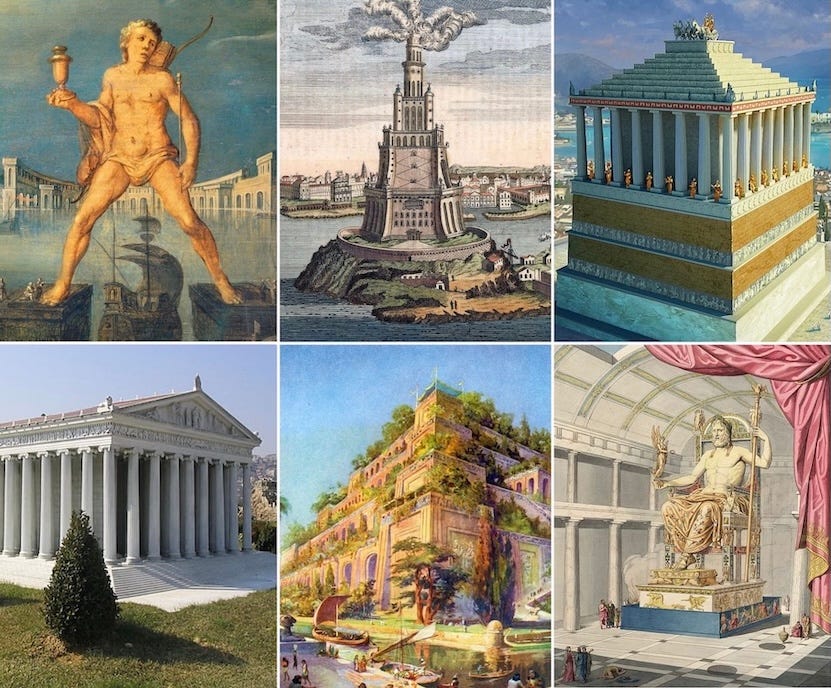



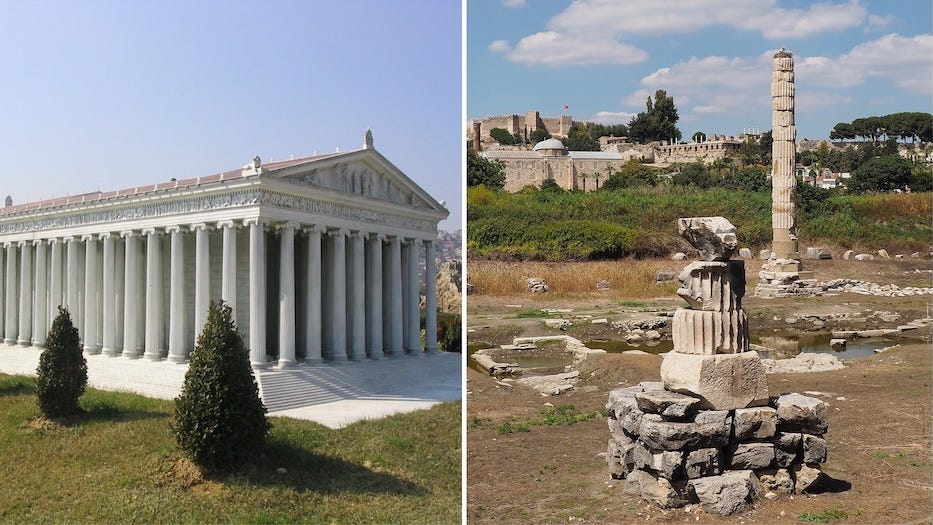
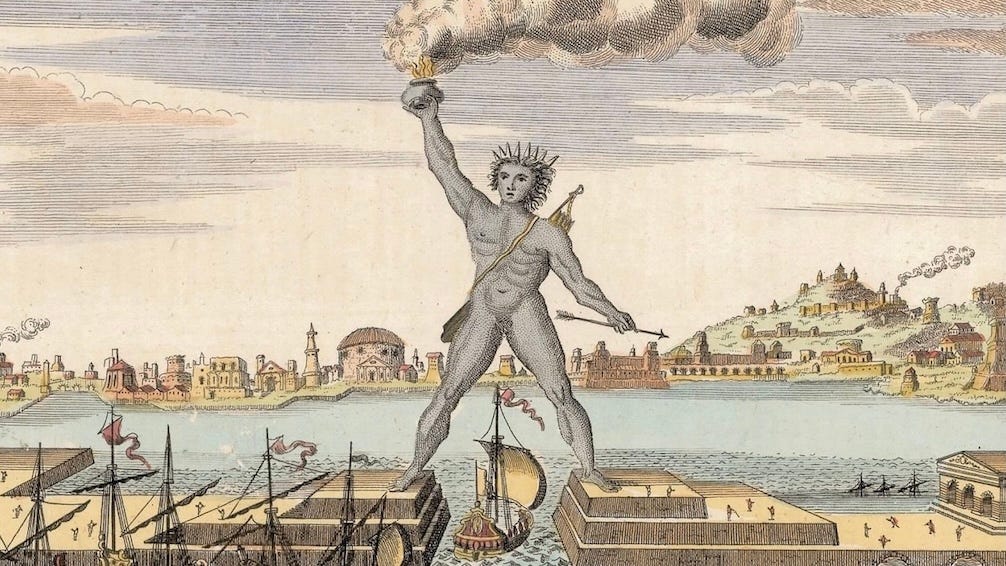
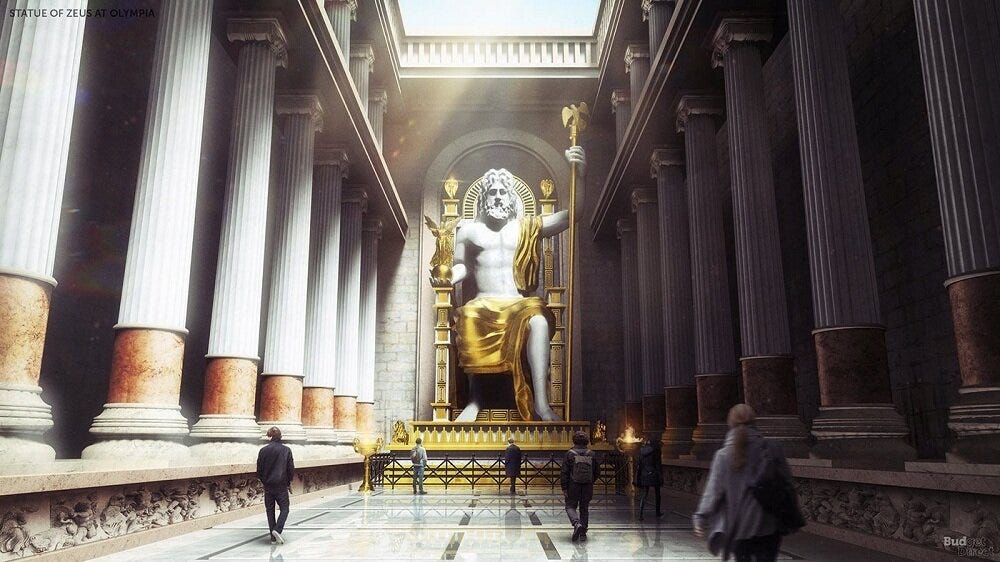
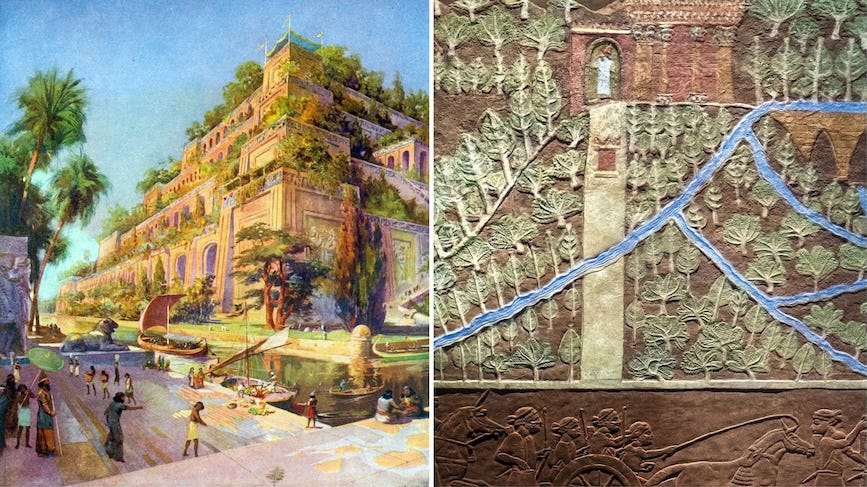
The Hanging Gardens didn’t truly “disappear” until every corner of the Middle East was mapped. Before that, they were real in the deep imagination - an echo of paradise. Even if they were never "real".
Just shows how imagination and reality shape one another.
The works of man are but dust in the wind.